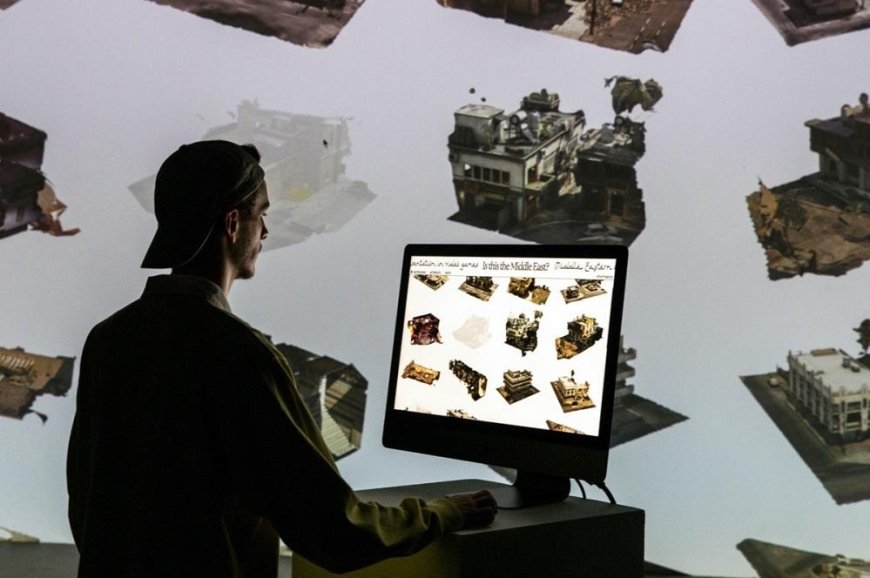What is photogrammetry?
the environment through the processes of registration, measurement and interpretation of photographic images. What is photogrammetry.

The photogrammetry is the art, science and technology of obtaining reliable information about physical objects and the environment through the processes of registration, measurement and interpretation of photographic images. What is photogrammetry.
Many of the maps used today are created with photogrammetry and photographs taken from airplanes. This discipline can be used to capture fixed point measurements to be able to evaluate the dimensions of the photographed object, even in 3D.
Basically, photogrammetry is a collection of measurements in the physical world through computational analysis of photographs. This discipline is recognized as a scientific tool and field of research.
As is the case in other areas that also mix elements of the real world with the digital world, photogrammetry can be used to estimate motion in a 3D organism (or vehicles in motion or biological organisms, for example).
Photographic images are analyzed and, depending on the purpose required by the computer, they can use control points to create a 3D model or use a combination of reference points, motion effect, physical or biomechanical.
After using algorithms to process the collected information, the results can be very accurate.
The accuracy of photogrammetry can also be used to verify the accuracy of computer algorithms used to predict vehicle movements, as well as algorithms developed from physical models or in biomechanics.
Characteristics of photogrammetry
As the name implies, it is a coordinated 3D measurement technique that uses photography as the primary means of metrology (or measurement).
The fundamental principle used in this discipline is triangulation, or rather air triangulation.
When shooting at least two different places, "lines of sight" to the points of this object can be developed in each camera. These lines of view are mathematically intercepted to create 3D coordinates of points of interest.
The use of photogrammetry in topographic mapping has been established for many years, but recently this technique has been widely used in architecture, industry, mechanical engineering, forensics, hydrography in medicine and geology, among others.
Your accurate information products in 3D are becoming increasingly important in several areas.
Branches of photogrammetry
This method can be classified in different ways; The most common way is to divide it according to the position of the camera when taking pictures.
Metric photogrammetry is the process of obtaining accurate measurements from photographs, and interpretive photogrammetry is the process of recognizing and identifying objects and then judging their importance through systematic and thorough analysis.
There is also a difference between printed or analog photogrammetry and digital photogrammetry. Printing is the use of printed photographic products and, as a rule, optical and mechanical systems are used.
On the other hand, digital is when the image is in digital form and all manipulations are performed by a computer in a virtual domain. However, the same basic geometric principles apply to all forms of this science.
Aerial photogrammetry
In this discipline, the camera is mounted on an aircraft and usually points vertically to the ground. Many overlapping photographs of the ground are taken as the aircraft flies along the flight path.
Traditionally used aircraft were classic aircraft, but many projects are currently being carried out with drones and other drones.
Also, previously these photos were processed in a stereo plotter (a tool that allows the operator to see two photos simultaneously in stereoscopic form), but now they are often processed by automated desktop systems.
Terrestrial and short distance photogrammetry
Here the camera is located on the ground and held manually, mounted on a tripod or pole.
Usually this type of photogrammetry is not topographic; This means that the result is not a topographic model, such as terrain models or soil maps. Rather, it results in drawings, 3D models, measurements, or point clouds.
Common cameras are used to model and measure buildings, engineering structures, forensic and emergency scenes, mines, earthworks, archaeological artifacts, film sets, etc ..
In the computer vision community, this type of discipline is often called image-based modeling.
Metric photogrammetry
This branch is responsible for accurately measuring and calculating the photographs according to the size, shape and position of the photographic elements and / or obtaining other information, such as the relative (coordinated) localization of the elements, areas or volumes.
These photographs are taken using a metric camera and are used mainly in engineering fields such as topography.
Interpretive photogrammetry
This involves recognizing and identifying photographic elements in a photograph, such as shape, size, shadow, and images, to add value and intelligence to the information already observed in the photograph.
Using photogrammetry
This discipline can simplify the complexity of modeling in the background and a set of 3D games and movies, especially when looking for a realistic result.
You can also capture the colors of an object by moving them to the texture map of the model. This saves you time when creating items for games.
Photogrammetry can also be used as a starting point to create stylized elements. Because it is fast and convenient, this science (like other forms of capturing reality) can reduce the need for human labor; it automates processes.
